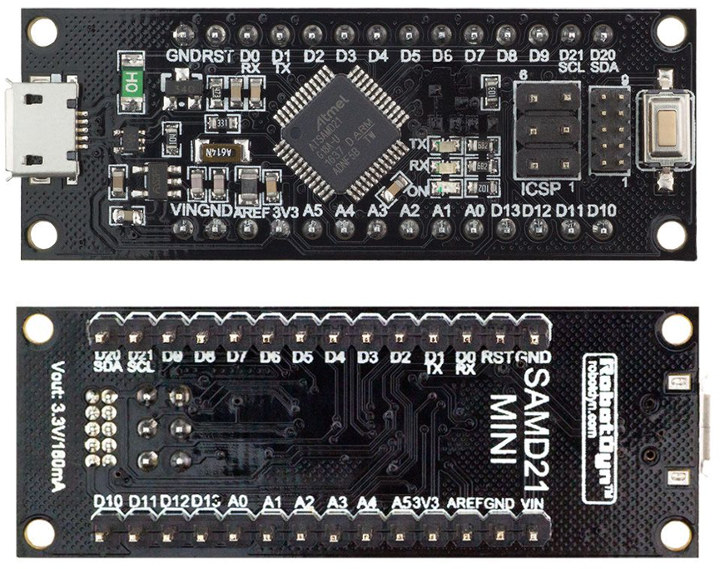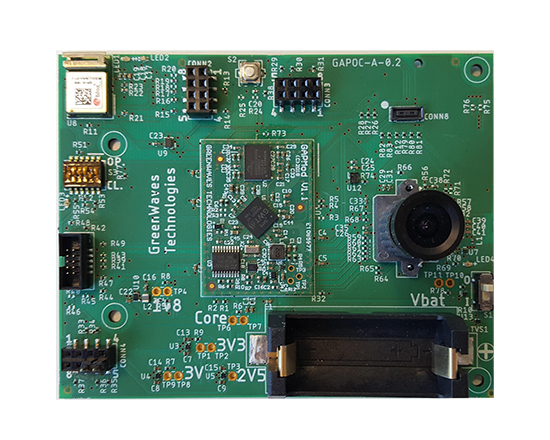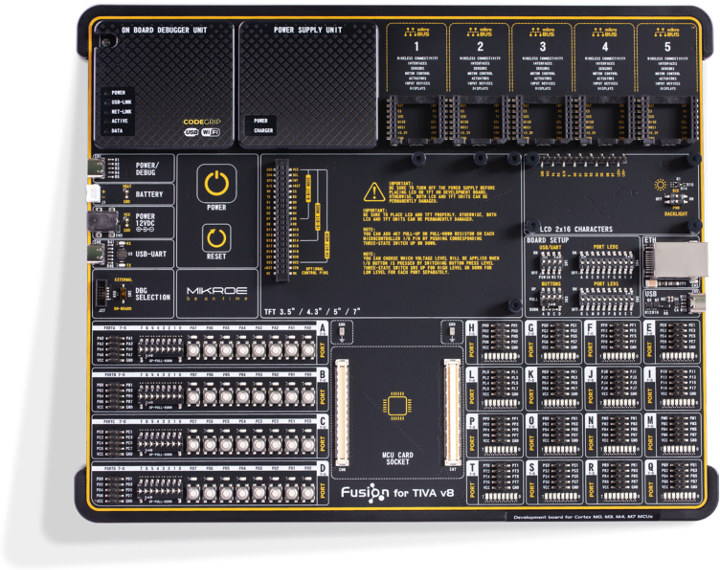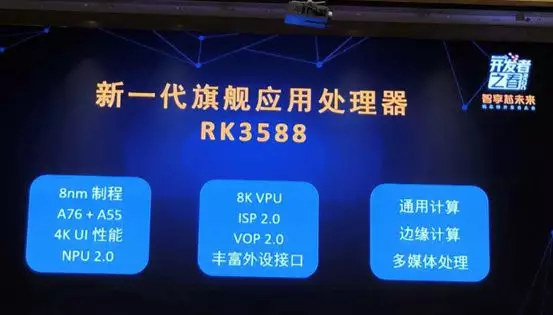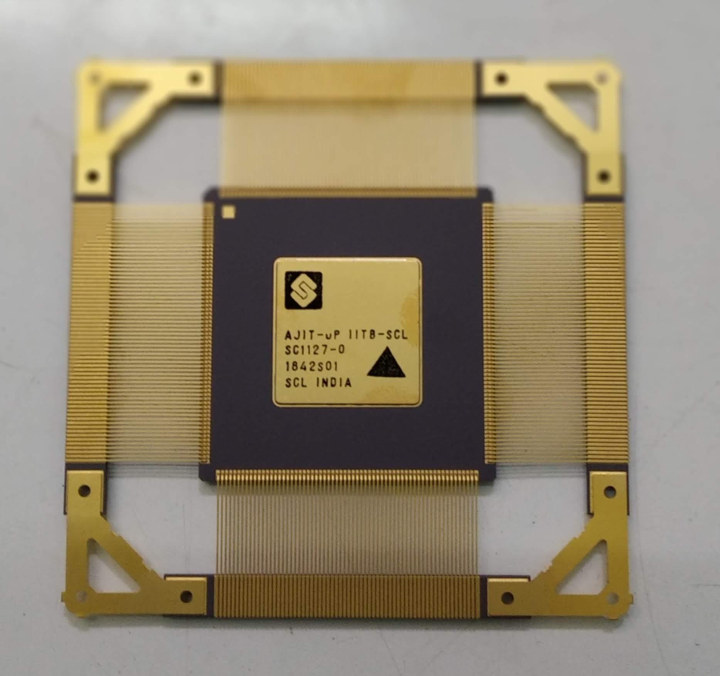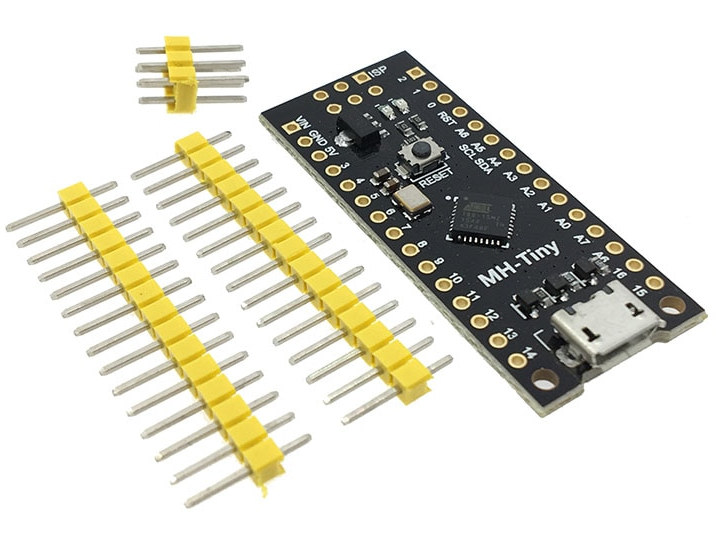Arm TechCon will take place on October 8-10, 2019 at San Jose Convention Center to showcase new solutions from Arm and third-parties, and the company has now published the agenda/schedule for the event. There are many sessions and even if you’re not going to happen it’s always useful to checkout what will be discussed to learn more about what’s going on currently and what will be the focus in the near future for Arm development. Several sessions normally occur at the same time, so as usual I’ll make my own virtual schedule with the ones I find most relevant. Tuesday, October 8 09:00 – 09:50 – Open Source ML is rapidly advancing. How can you benefit? by Markus Levy, Director of AI and Machine Learning Technologies, NXP Over the last two years and still continuing, machine learning applications have benefited tremendously from the growing number of open source frameworks, tools, […]
SAMD21 MINI / Wemos D1 SAMD21 M0 Mini Development Board Sells for $7 and Up
Microchip / Atmel SAMD21 Arm Cortex-M0+ microcontroller has been around for several years, and we covered various boards based on the MCU include the official Arduino Zero launched in 2014, Arduino Tian, and the tiny SAM 15×15 or Exen Proto boards among others. Another SAMD21 development board has now shown up on Electrodragon website: SAMD21 Mini Development Board sold for $14.50 on the website, but you’ll also find it, under the RobotDyn or Wemos brand on Aliexpress for $7.05 and up. SAMD21 Mini Board / WeMos D1 SAMD21 M0 Mini Specifications: MCU – Microchip ATSAMD21G18 Arm Cortex-M0+ microcontroller @ 48 MHz with 32KB data RAM, 256KB flash USB – 1x micro USB port for power and programming Expansion 2x 14-pin headers with 19x digital I/O (including 12x PWM), 6x Analog I/O 3.3V logic level Programming – 6-pin ISCP connector Misc – Power, Tx and Rx LED’s, button Power Supply Input […]
GAPPoc AI development boards based on the GAP8 RISC-V Chip
GreenWaves has developed a development board based on the GAP8 chip which can be evaluated from a GAPuino board, a generic board that can run off a low power external power source or USB and is compatible with the Arduino ecosystem. Recently the company moved beyond the generic board to the GAPPoc, platform which stands for GAP8 Proof of Concept. The GAPPoc is focused on a class of applications which can be embedded on a single board and able to carry hardware such as crystal or external memory, sensors, a radio fit, and a battery. The board will be geared towards a set of low power functions for a particular class of applications. This is a family of boards designed to increase the range of abilities in edge Artificial Intelligence. At this time there is only a single board with a platform to enhance AI, targeting Computer Vision in the […]
Fusion for TIVA v8 Development Board Enables Debugging & Programming over WiFi
Texas Instruments TIVA Arm Cortex-M4 MCU family was first introduced in 2013, I tested a TIVA Launchpad the following years, and since microcontrollers have usually a long life span they are still in use today, and should still be available for many years. I’m writing about this TI MCU family today because MikroElektronika has just announced Fusion for TIVA V8 development board for TI TIVA, Stellaris and MSP432 microcontrollers with plenty of I/Os including some MikroBus expansion slots, as well as support for debugging and programming over WiFi in addition to the usual USB-UART interface. Fusion for TIVA v8 board specifications: MCU – Socket for MikroElektronika MCU CARD Display Interfaces 2x 20-pin TFT display connector 1x 16-pin LCD connector for 2×16 characters LCD displays in 4-bit mode, optional PWM backlight driving feature Programming – On-board CODEGRIP programmer/debugger, JTAG connector for connecting an external programmer/debugger Connectivity – Ethernet port, WiFI in […]
RK3588 8K Arm Cortex-A76/A55 SoC, Rockchip Roadmap to 2020
Rockchip had their annual event yesterday offering a view of past achievements, as well as a glimpse into the future with new products announcements. The company is ready to go to the next level with their Rockchip RK3588 featuring Cortex-A76 and Cortex-A55 cores, 8K video decoding support, 4K user interface support, an NPU 2.0 (Neural Processing Unit) manufactured using an 8nm LP process. The processor should have eight cores in a 4+4 dynamIQ configuration according to a tip from “coldfish”, and the new 8nm process is expected to increase performance by 20 to 30 percent, while the power consumption will be reduced by 40 percent. Mass production is expected for Q1 2020. The company also showed a slide with their video encoder/decoder IP, and Gen3 should be in RK3588 since that’s the only one with an 8K 60 fps decoder using either AVS3 or H.266 (VVC). I’m quite confused with […]
AJIT is a Microprocessor Made in India
There are only a few countries with companies that can design and/or manufacture chips. Some of the ones that come to my mind off the bat include: the US, China, Taiwan, Japan, France, and Italy. But India did not… That’s until recently as IIT Bombay conceived AJIT the first Indian microprocessor, which was then manufactured at the Semi-Conductor Laboratory (SCL) in Chandigarh, the capital of Punjab and Haryana states. Details are limited. For example, I’m unable to find out which architecture was used by the processor, but we do know it’s a microcontroller class 32-bit microprocessor clocked at 70 to 120 MHz with an arithmetic logic unit, a memory management unit, a floating point unit, as well as a hardware debugger unit. The sample pictured above has been manufactured with a 180nm process, but they plan to move to a 65nm process eventually. Tools used for development include AHIR-V2 which […]
Sub-$2 MH-Tiny ATTINY88 Micro Development Board Provides an Alternative to BluePill Board
Bluepill is a popular STM32 Arm Cortex-M3 development board in a compact form factor, and can be programmed with the Arduino IDE thanks to STM32duino project. A key selling point is also its ultra low price since it is now available for $1.67 including international shipping. I’ve now been informed a similar board is available, but instead of an STMicro MCU, it comes with Microchip ATtiny88 AVR micro-controller. We first discovered MH-Tiny ATtiny88 micro development board on Electrodragon where it is sold for $2.94, but the board is also listed on Aliexpress for virtually the same price as Bluepill board. MH-Tiny ATtiny88 micro development board specifications: MCU – Microchip ATtiny88 8-bit AVR MCU @ 16 MHz with 8KB ISP flash memory (over 6KB available after bootloader footprint taken into account), 64 bytes EEPROM, 512 bytes SRAM USB – 1x Micro USB port for power and programming Expansion – 2x 15-pin […]
FOSSASIA 2019 Schedule – March 14-17
As its name implies, FOSSASIA is a Free and Open Source Software event taking place every year in Asia, more specifically in Singapore. I first discovered it last year, and published a virtual FOSSASIA 2018 schedule last year to give an idea about the subjects discussed at the event. It turns out FOSSASIA 2019 is coming really soon, as in tomorrow, so I’m a bit late, but I’ll still had a look at the schedule and made my own for the 4-day event. Thursday – March 14, 2019 10:05 – 10:25 – For Your Eyes Only: Betrusted & the Case for Trusted I/O by Bunnie Huang, CTO Chibitronics Security vulnerabilities are almost a fact of life. This is why system vendors are increasingly relying on physically separate chips to handle sensitive data. Unfortunately, private keys are not the same as your private matters. Exploits on your local device still have […]



